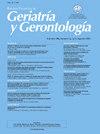老化对动词流畅性中的动词内容的影响
Q3 Medicine
引用次数: 0
摘要
背景动词流畅性是对额纹状体完整性的敏感神经心理学测试。随着年龄的增长,大脑的生理和形态会发生变化,然而,它们对动词流畅性的语义方面的影响尚不清楚。目的探讨年龄对动词流畅性任务中动作内容和词汇频率顺序产生的影响。材料与方法共招募受试者86例,分为51 ~ 55岁、56 ~ 60岁、61 ~ 65岁和66 ~ 70岁4组。在动词流畅性范式的四个15秒间隔内,用三个测量指标:动词产生量、动作内容和词汇频率来分析产生序列。情绪、整体认知状态和教育受控制。结果高运动内容的初始效应在老年人样本中被报道,包括在动词流利的前15秒间隔内产生较高的运动内容的动词。与51-60岁的成年人相比,66-70岁年龄组的初始运动内容较低,并且与所分析的心理语言学和人口统计学变量无关。本研究开创性地提供了对老年墨西哥西班牙语使用者在动词流利性过程中运动内容的数据;需要更大规模的研究来推广结果。评估动词流畅性的语义参数的重要性,作为一个有前途的工具,在临床实践的患者额纹状体损伤被强调。本文章由计算机程序翻译,如有差异,请以英文原文为准。
Efecto del envejecimiento sobre el contenido motor en la fluidez de verbos
Backround
Verb fluency is a sensitive neuropsychological test to frontostriatal integrity. Changes in brain physiology and morphology occur with aging, however, their impact on semantic aspects of the verb fluency is unknown.
Objective
To assess the effect of aging on the sequential production of motor content and lexical frequency in the verb fluency task.
Materials and Methods
Eighty-six subjects were recruited, organized into four age groups: 51-55, 56-60, 61-65 and 66-70 years. The production sequence was analyzed in four 15-second intervals of the verb fluency paradigm with three measures: verbs produced, motor content, and lexical frequency. Mood, global cognitive state, and education was controlled.
Results
An initial effect of high motor content is reported in a sample of older adults, consisting verb production with higher motor content during the first 15-seconds interval of verb fluency. This initial motor content is lower in the 66-70 age group compared to adults aged 51-60 years and is independent of the psycholinguistic and demographic variables analyzed.
Conclusions
This study is pioneering in providing data on motor content during verb fluency in an exploratory sample of older Mexican Spanish speakers; larger studies are needed to generalize the results. The importance of assessing semantic parameters in verb fluency as a promising tool for clinical practice in patients with frontostriatal impairment is highlighted.
求助全文
通过发布文献求助,成功后即可免费获取论文全文。
去求助
来源期刊

Revista Espanola de Geriatria y Gerontologia
Medicine-Medicine (miscellaneous)
CiteScore
1.90
自引率
0.00%
发文量
62
审稿时长
85 days
期刊介绍:
Una revista de gran prestigio por sus artículos originales de investigación y revisiones. Permite cubrir todas las áreas de la medicina pero siempre desde la atención al paciente anciano, y está presente en los más reconocidos índices internacionales.
 求助内容:
求助内容: 应助结果提醒方式:
应助结果提醒方式:


